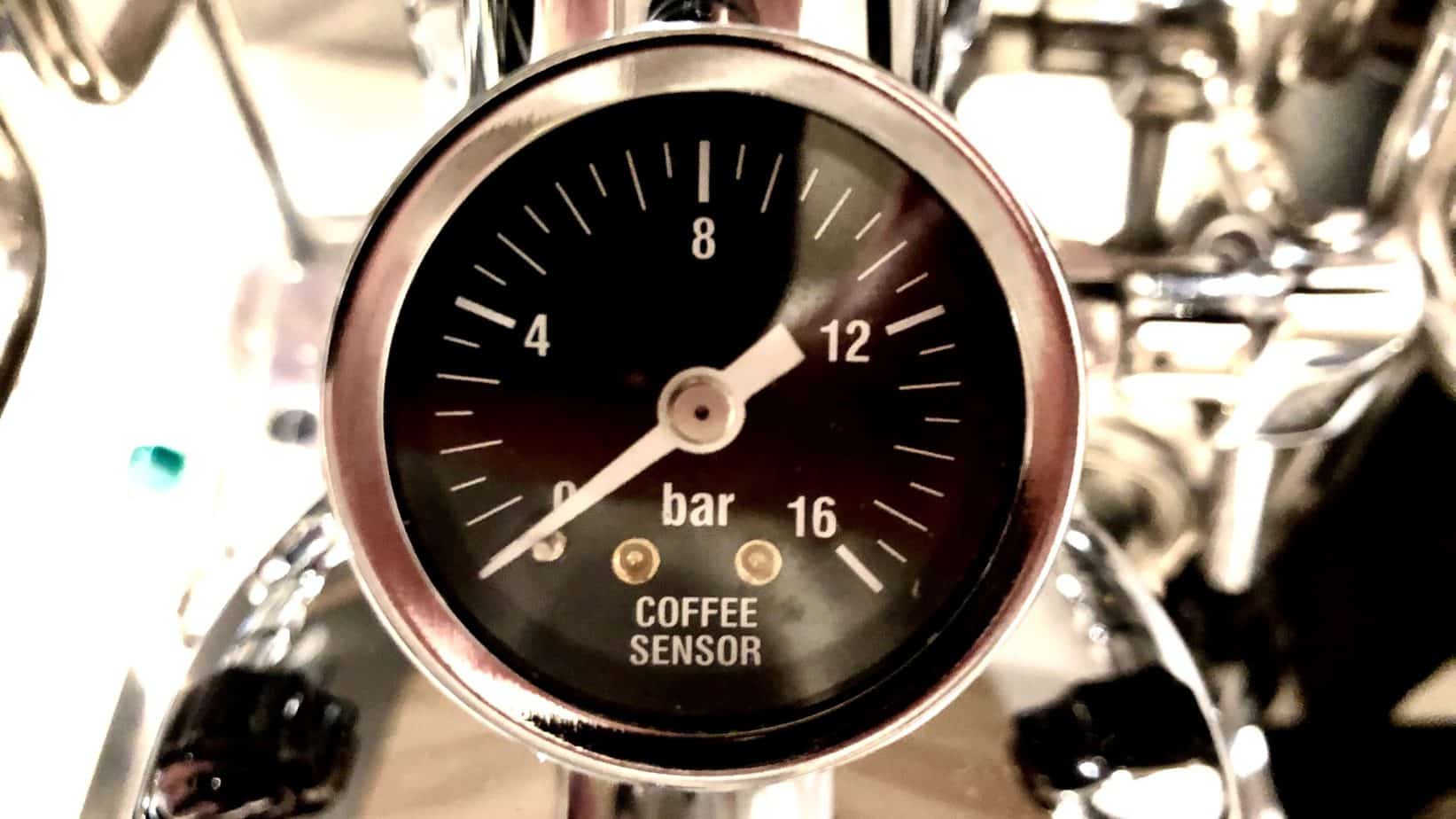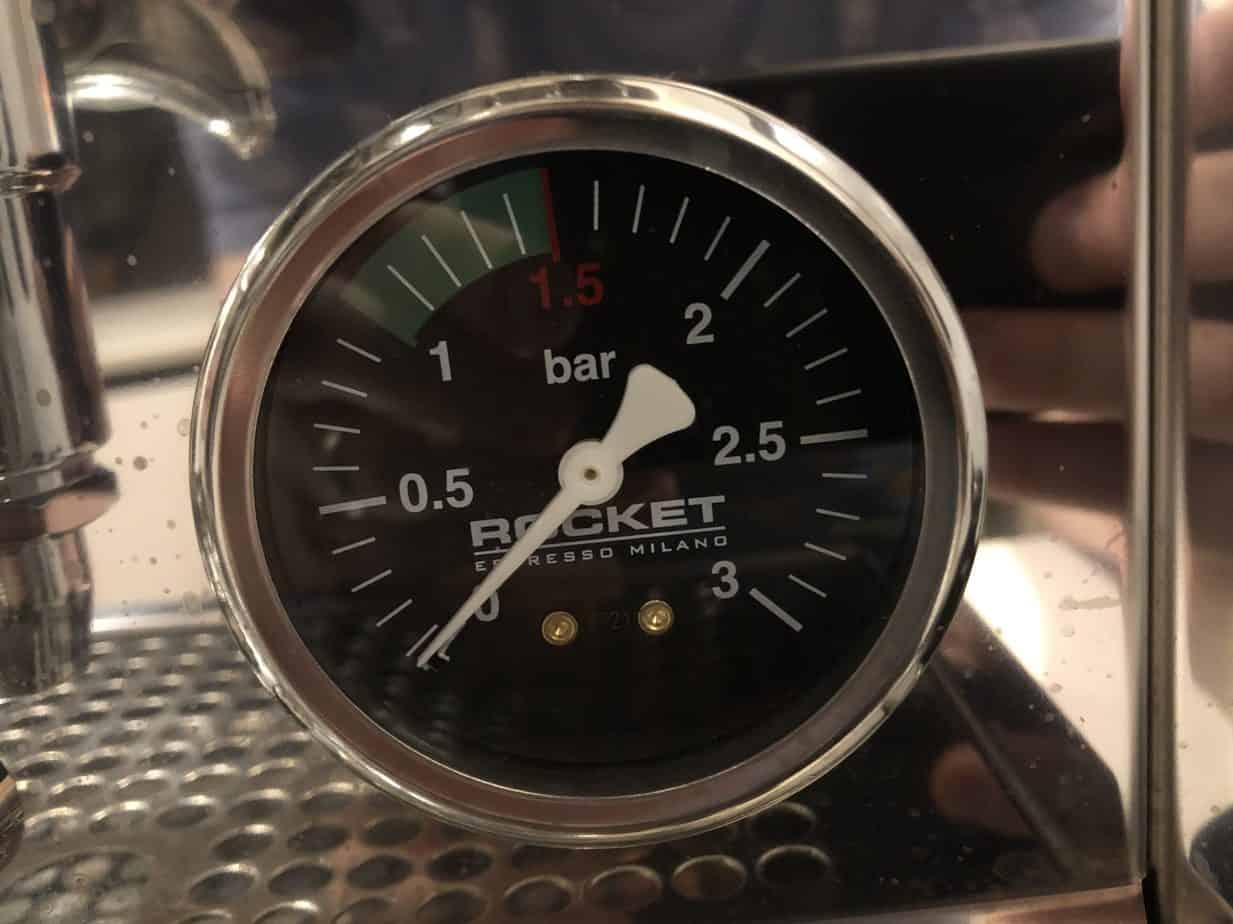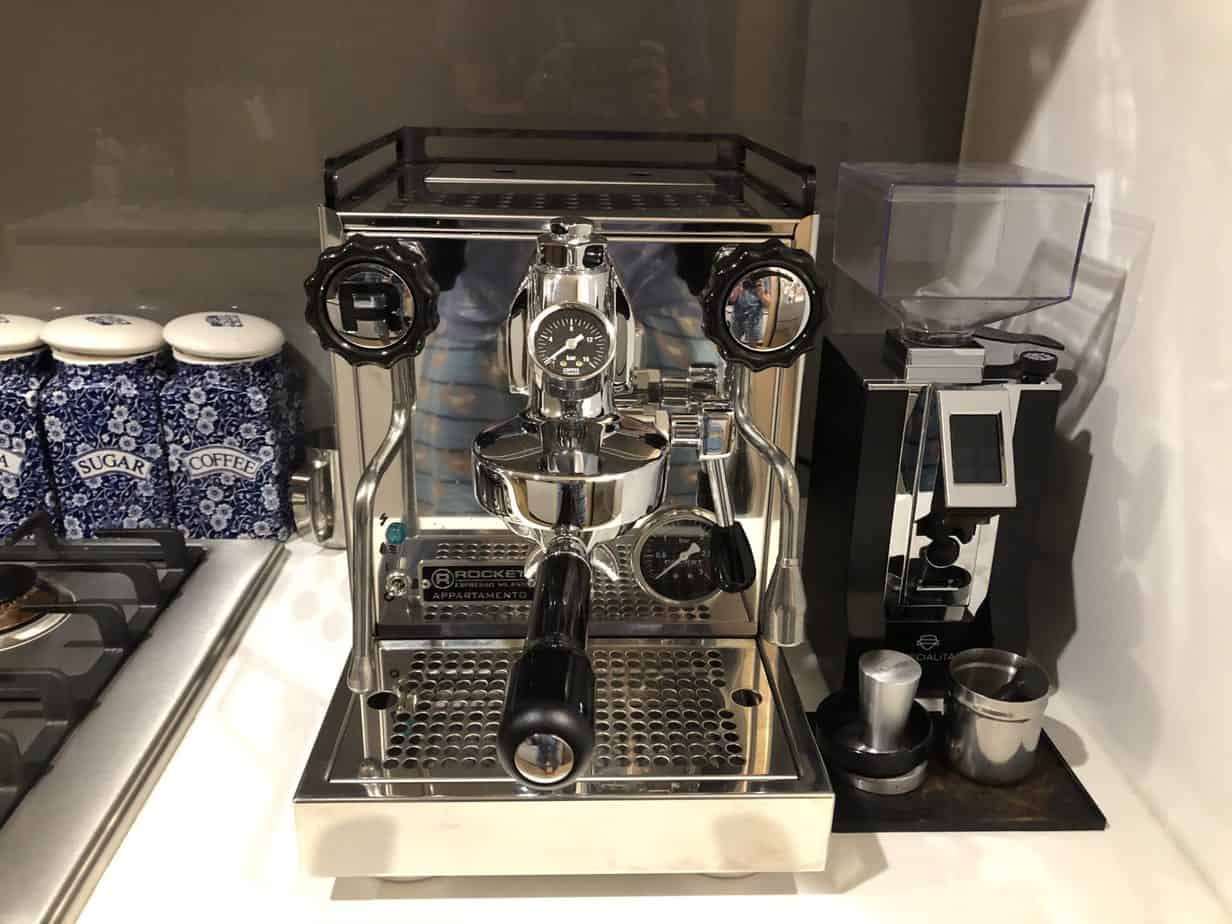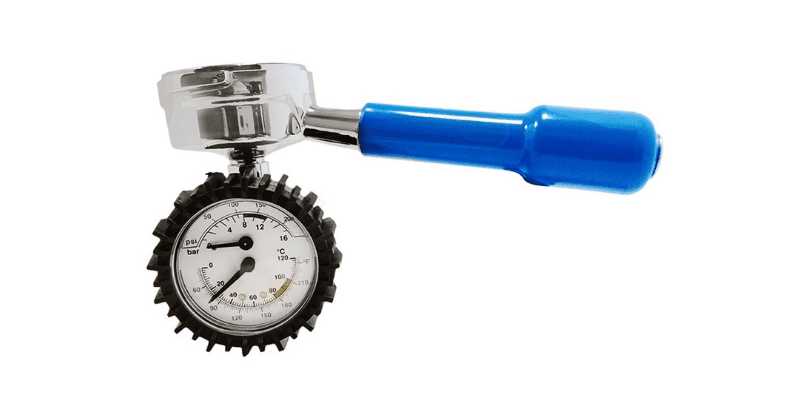Espresso bar pressure is what makes espresso, "espresso". Without pressure it's impossible to make a quality shot of coffee. In this article I'll be giving a barista's explanation how many bars is needed for the best tasting coffee.

Pressure gauge on my espresso machine.
What Is A Bar Of Pressure on a Espresso Machine?
On an espresso machine a "bar" measures how much pressure is being passed through your coffee puck when making espresso.
A bar of pressure is a metric unit of measurement that represents one unit of atmospheric pressure. One bar is equal to roughly 100,000.00 Pa. The imperial version of a bar is PSI. One bar of pressure equals about 14.5 PSI. The higher the "bar" the higher the pressure.
How Many Bars of Pressure For Espresso?
9 bars of pressure is the industry standard needed to make great tasting espresso. Most domestic and commercial machines should come set at 9 bars at the group head.
But why is it 9 bars? Many baristas and coffee engineers have explored this topic. Some say it goes back to the days of spring lever espresso machines, however, the more likely explanation as noted by James Hothman is that when making espresso 9 bars of pressure creates the "peak flow".
That is, it's the highest level of pressure that that allows most water to pass through the coffee puck before your flow of water decreases. Flow is very important as it affects the taste of your coffee as discussed below.
What Happens When The Pressure Is Too High?
When pressure is too high your espresso extraction will come out sour and bitter. Once you get over 9 bars of pressure your coffee will start to taste over extracted. You will also find that your extraction is super slow and your espresso machine will struggle to get water out the group head. This is because the "flow" of water is reduced.
What Happens When The Espresso Bar Pressure Is Low?
When the pressure is too low on your espresso extraction your coffee will taste watered down and muddled - aka dirty water. This is because the pressure is too low which means water simply rushes through the coffee puck without picking up the flavour. You will find that anything under 7 bars will result in your coffee tasting watered down and muted.
It's okay for the pressure to be low to begin with when doing a pre-infusion (which is a brief pre-wetting of the coffee puck), but once you start the extraction you need higher pressure in order for the espresso machine to pick up the flavor of the coffee grinds.
How Do You Measure Bars of Pressure In Your Espresso Machine?
Depending on the type of espresso machine you have, there are various coffee machine components that can you can measure the pressure it produces at the group head:
- In built pressure gauges
- Group head pressure gauge
- Portafilter Pressure Gauge
In Built Pressure Gauges
Depending on the type of boiler your espresso machine uses, it will likely have a one or two pressure gauges that shows you the pressure that is used to extract the coffee.
One typically measures brew or pump pressure, while the other measures steam pressure.
You can keep an eye on the pressure gauge during the extraction process to see how many bars of pressure your espresso machine is producing.
To get a base reading without any coffee, simple put in a your blank basket into your group head as you would when cleaning it and turn on the pump.

A steam pressure gauge - make sure you are reading the correct gauge.
Pump Pressure vs Group Head Pressure
It's important to note when looking at the gauges on your espresso machine, the pressure shown at the pump differs from what's at your group head.
This is because the pressure decreases on its way to the group head. In order to get 9 bars of pressure at the group head, most espresso machines will be set at 10 bars of pressure at the pump.
It's important to read your user manual of your espresso machine to make sure you know where your espresso machine is reading the pressure, at the pump or group head, and what pressure the gauge is showing -Otherwise you may be reading it wrong.
Group Head Pressure Gauge
If you have a E61 espresso machine like I do, you can buy a group head pressure gauge to install on your espresso machine. This will give you the most accurate reading during the espresso extraction as the pressure is being read at the group head.
They are rather affordable and very easy to install. I have a coffee sensor one on my rocket espresso machine as shown below.

A group head pressure gauge installed on my E61 espresso machine.
Portafilter Pressure Gauge
If you don't have a E61 espresso machine, or want to quickly test your pressure without installing a new gauge, your best bet is to get a portafilter with a built-in pressure gauge. This is what is used by espresso technicians when they do maintenance on your espresso machine as seen below.

A portafilter pressure gauge.
9 Bar Vs 15 Bar vs 20 Bar Espresso Machines - Is Their A Difference?
You sometimes see espresso machine manufactures advertise the number of bars of pressure their espresso machine produce. Often you see 9 bars, 15 bars or 20 bars. This is mostly a marketing gimmick.
As long as your espresso machine produces 9 bars of pressure at the group head you are set to go. 15 or 20 bars may be the max pressure the coffee machine produces, but at that high of pressure no water will be coming out of your espresso puck - so it's redundant.
Wrapping up...
And that wraps up this guide about espresso bar pressure. If you have any questions leave a comment below and I'll answer it!

